Electronic Keyers & Keyer Paddles
With the invention of the vacuum tube, and later the transistor, it naturally followed that clever designers would invent electronic devices to simplify the generation of Morse Code so that CW operators could send code with even less wrist motion than required to operate a bug. Hence, the electronic keyer was born.
The first commercial electronic vacuum tube keyer was the Mon-Key, sold by the Electric Eye Company of Danville, Illinois starting around 1948. The Mon-Key, like all electronic keyers, automatically produced Morse dots when the keying lever was moved to the right, and Morse dashes when the lever was moved to the left. As with all the early keyer designs, the keying lever was integrated into the keyer unit, often with the paddles protruding from the front of the cabinet. Two knobs controlled the speed of the Morse code and the volume.
Most of these early keyers were kind of clunky to operate because they didn't have the best quality keying levers, but this was not something the operator could control. In addition, the Mon-Key was actually sort of a dangerous instrument to operate, as 120V AC was present on the metal keying lever itself, so if you removed the plastic cover from the keying lever assembly, you could get a nasty shock if you accidentally touched the lever !
Towards the end of the 1950's, people were starting to design the mechanical keying mechanism and the electronic keyer separately. One of the most popular stand-alone keyers was designed by W9TO (The TO Keyer), and was mass-produced by Hallicrafters Radio Co. The mechanical mechanism became known as a Keyer Paddle. This separation allowed for the development of many interesting keyer paddle designs, which continue to this day. Some of the first keyer paddles included the El Key, the Nikey, and the famous W8FYO paddle.
There were 2 types of keyer designs, Non-Iambic and Iambic. A Non-Iambic keyer uses a paddle with a single lever, which is moved to the right or left, depending on whether the operator wants to make dots or dashes. All of the early electronic keyer designs used Non-Iambic operation.
An Iambic keyer uses a paddle with 2 levers, the right one controls dashes and the left controls dots. What gives the Iambic keyer its name is that if you squeeze the left and right paddles together, the keyer produces an alternating string of dots and dashes, which gives the Iambic keyer a huge advantage when sending Morse characters such as "C", "K", or "R". Thus, Iambic keyers are the easiest to operate since they require the smallest amount of hand movements.
The first Iambic keyer paddle to appear on the market was The Nikey, designed by Nicholas Lefor, W2BIQ. The Nikey was first advertised in 1962 and made by Lefor Industries of New Canaan, Connecticut.
With the invention of transistors and microprocessors, the next step in keyer design was the memory keyer. Many keyers made today have the ability to store short Morse code messages which can be re-played at the touch of a button. This is a great thing for amateur radio contest operators, who can use this feature to automatically send out repetitive messages such as callsigns and the other short exchanges of information that are sent during contests.
Today, there are some really nice keyer paddles being made by master craftsmen such as Pietro Begali, Alberto Frattini, Mike March, and others. You can see examples of their amazing work in the photos below. Many of these paddles are available for purchase, but be forewarned.....quality comes at a price !
Below are some pictures of Electronic Keyers and Keyer Paddles dating from 1948 to the present. Click on each thumbnail to view the full size image:
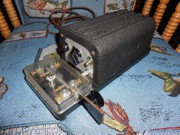 |
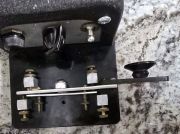 |
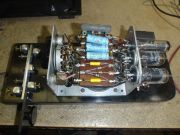 |
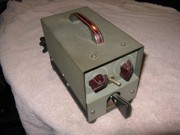 |
| The Mon-Key. Electric Eye Co, Danville, Illinois. Ca. 1948 | Close-Up of the Key on the Mon-Key | A View Inside the Mon-Key | Duomatic Keyer by Forrest "Bart" Bartlett, Paradise, California. Ca. 1951 (N7CFO Collection) |
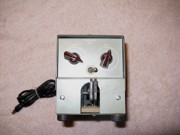 |
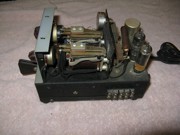 |
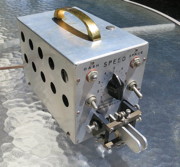 |
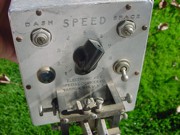 |
| Front View of the Duomatic Keyer | View of the Tubes inside the Duomatic | The Electronic Key from Special Devices, Barron, Wisconsin. Early 1950's | Close-up of The Electronic Key |
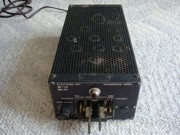 |
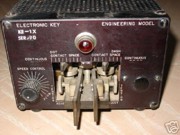 |
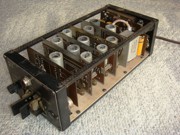 |
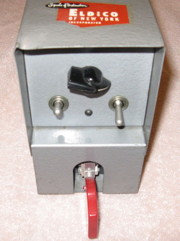 |
| Electronic Key Model KE-1X. Early 1950's | Close-up of the Keying Mechanism on the KE-1X | Inside the KE-1X | Eldico Model EE-1 Keyer, Mineola, NY. Early 1950's |
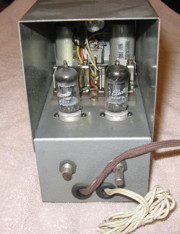 |
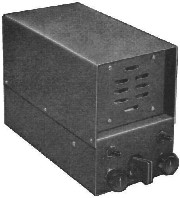 |
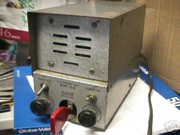 |
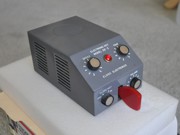 |
| Inside the Eldico EE-1 Keyer | Eldico Model EE-2 Keyer (Catalog Image) | Eldico Model EE-2 | Eldico Model EE-3 |
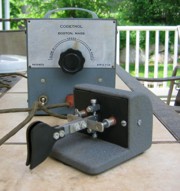 |
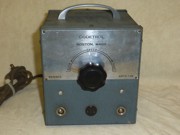 |
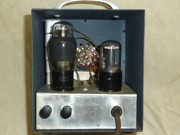 |
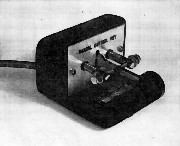 |
| Codetrol Keyer & Paddle. Bernard Breedlove, Atlanta. Ca. Late 1950's | Close-up of the Codetrol Keyer | View of the Tubes Inside the Codetrol | Close-up of the Codetrol Paddle |
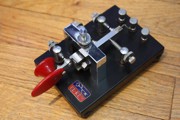 |
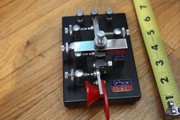 |
 |
 |
| El Key Paddle. Poucel Electronics (W2AYJ). Ca. 1959 | Another View of the El Key | Chrome Plated El Key | A Japanese Version of the El Key Made by Shore Mfg Co. Date Unknown |
 |
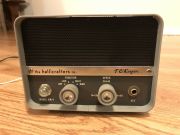 |
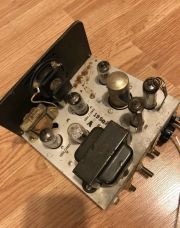 |
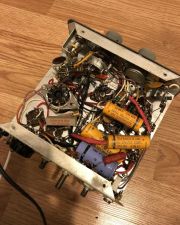 |
| Close-Up of the Shore Mfg. El Key Nameplate | The TO Keyer by W9TO. Sold by Hallicrafters Radio | Inside View of the TO Keyer Showing the Tubes | Underside of the TO Keyer |
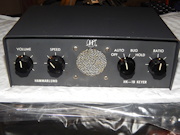 |
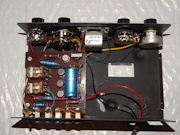 |
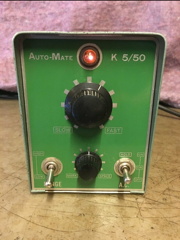 |
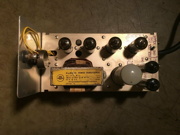 |
| Hammarlund HK-1B Keyer | Inside the Hammarlund Keyer | Auto-Mate K 5/50 Keyer. Designed by W9UE & W9TO. Became a Successor to the TO Keyer. Early 1960's | A View Inside the Auto-Mate Keyer |
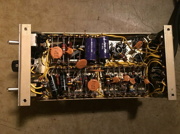 |
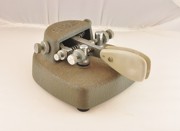 |
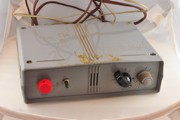 |
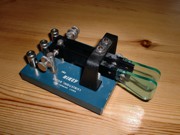 |
| Underside of the Auto-Mate Keyer | Autronic Paddle. Electrophysics Corp. Newport Beach, Cal. Ca. 1961 | Autronic Keyer | The Nikey Paddle. First Iambic Keyer Paddle. Lefor Industries (W2BIQ), New Canaan, Conn. Ca. 1962 |
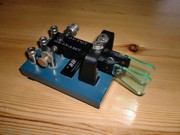 |
 |
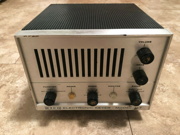 |
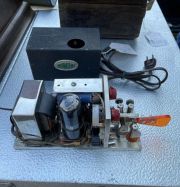 |
| The Nikey was Later Made by Productive Tool Co, Stamford, Conn. Ca. 1963 | A Nickel Plated Version of the Nikey Paddle | Eico 717 Tube Keyer | Early Tube Keyer by Dumont |
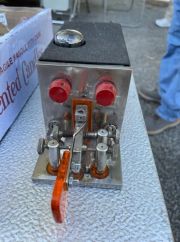 |
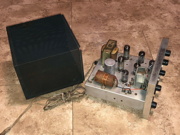 |
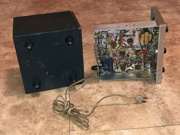 |
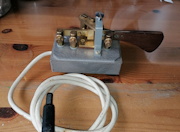 |
| Front View of the Dumont Keyer | Eico 717 Keyer With Cover Removed | This Would Surely be a Fun Troubleshooting Project ! | Keyer Paddle Made by Marconi Wireless for the British Diplomatic Wireless Service |
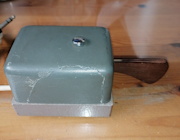 |
 |
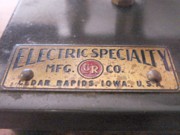 |
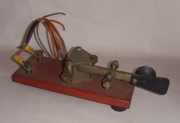 |
| The Marconi Paddle With the Cover in Place | Electric Specialties Keyer Paddle, Cedar Rapids, Iowa. Ca. Early 1960's | Close-up of the Electric Specialties Nameplate | Vibro Mors Keyer Paddle. Made in France. Early 1960's |
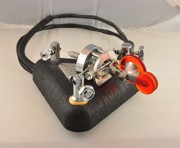 |
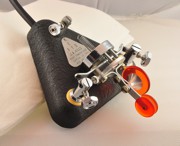 |
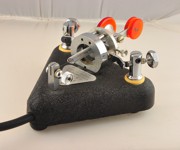 |
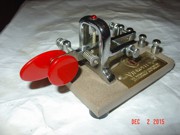 |
| W8FYO Paddle. JA Hills, Dayton, Ohio. Ca. 1962 | Another View of the W8FYO Paddle | A Third View of the W8FYO Paddle | The Vibrokeyer. Vibroplex Co. New York, 1960-Present |
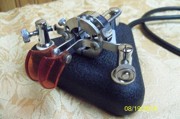 |
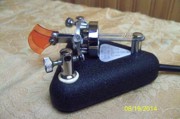 |
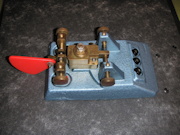 |
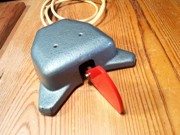 |
| The W8FYO Iambic Paddle. Early 1960's | Another View of the W8FYO Iambic Paddle | Hannes Bauer Paddle, Reichsgraf Model. Made in Germany in the 1960's | Hannes Bauer Edelmann Model. Ca. 1960's |
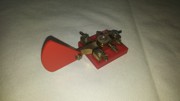 |
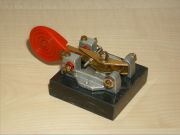 |
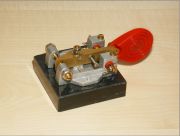 |
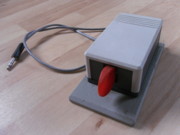 |
| The Keying Mechanism From Inside an Edelmann Paddle | Hannes Bauer Herold Model. Key Was Sold Un-Mounted on a Base | Another View of the Hannes Bauer Herold | Another Hannes Bauer Paddle. Model Unknown |
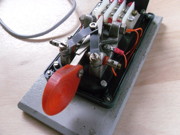 |
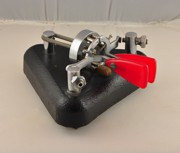 |
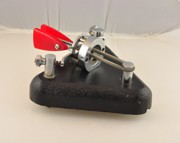 |
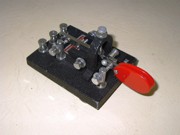 |
| Bauer Paddle With the Cover Removed | HAL Devices Version of the W8FYO Paddle. Mid 1960's | Another View of the HAL FYO Paddle | Brown Brothers ES Paddle. St. Louis, Missouri. 1964 |
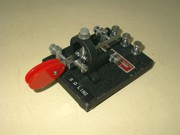 |
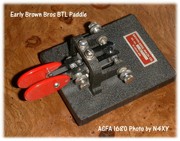 |
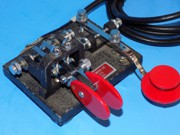 |
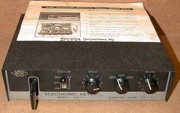 |
| Another View of the ES Paddle | Brown Brothers BTL Iambic Paddle. 1964-1974 | Brown Brothers CTL Paddle & Straight Key Set. 1964-1974 | Dentsuseiki DA-1 Keyer, Japan. Mid-1960's (SV1EDY Collection) |
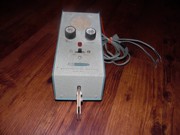 |
 |
 |
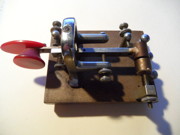 |
| Heathkit Model HD-10 Keyer. 1965-1974 | The Pfeiffer Magnamatic Paddle Patented by Andrew Pfeiffer, 1966 | Another View of the Pfeiffer Magnamatic Paddle | First Prototype of the N2DAN Magnetic Paddle by Steve Nurkiewicz, Using a Single Lever Vibrokeyer Paddle |
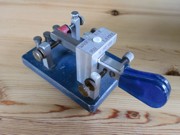 |
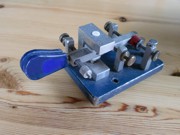 |
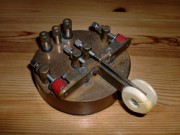 |
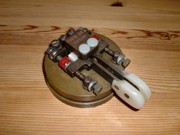 |
| Early Magnetic Paddle by WA2YBR (N2DAN), Steve Nurkiewicz. 1967 | Another View of the Early WA2YBR Paddle | An Early Prototype of the Mercury Paddle by WA2YBR (N2DAN). 1967 | One of the Earliest Paddles Made by Steve Nurkiewicz With the N2DAN Callsign. Early 1970's |
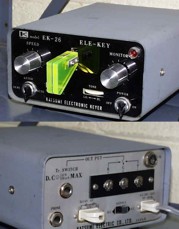 |
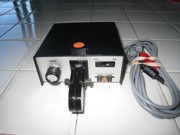 |
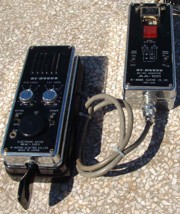 |
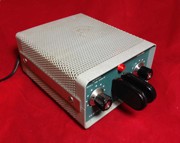 |
| Katsumi EK-26 Ele-Key, Japan. Ca. Early 1970's (SV1EDY Collection) | Ten-Tec Keyer & Paddle. Ten-Tec Corporation, Sevierville, Tenn. Ca. Early 1970's | Hi-Mound EK-101 Keyer. Early 1970's. (SV1EDY Collection) | Heathkit Model HD-1410 Keyer. Mid 1970's |
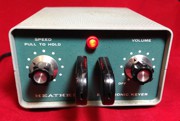 |
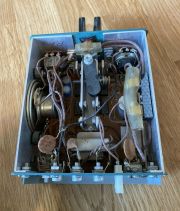 |
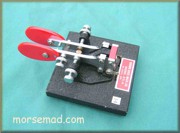 |
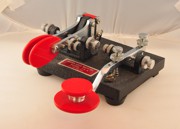 |
| Another View of the Heathkit HD-1410
|
Inside the Heathkit Keyer | Brown Brothers BTL-A. St. Louis, Missouri. 1974-1979 | Brown Brothers CTL-A Paddle & Straight Key Set. 1974-1979 |
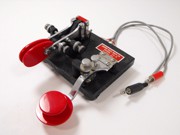 |
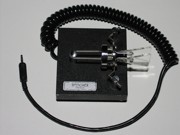 |
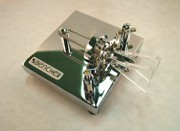 |
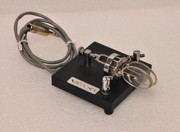 |
| Brown Brothers CTL-B Paddle & Straight Key Set. 1974-1979 | Bencher Paddle Model BY-1. 1974-Present. Very Similar Design to the W8FYO Paddle | Bencher Model BY-2 | Bencher Model ST-1. The Non-Iambic Version of the BY-1 |
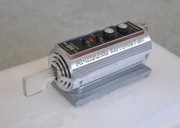 |
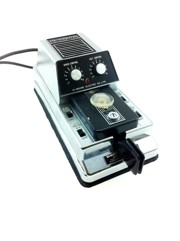 |
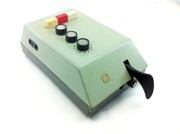 |
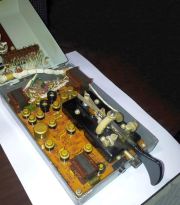 |
| Hi-Mound UFO Keyer & Paddle, Japan. Ca. 1970's | Hi-Mound EK-103 Keyer & Paddle. Ca. 1970's | Russian Keyer & Paddle, Maker Unknown. Ca. 1970's | Inside the Russian Keyer |
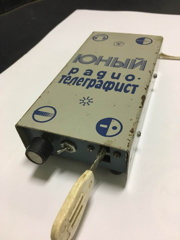 |
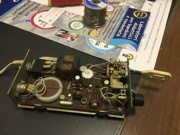 |
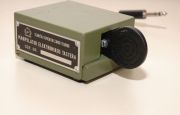 |
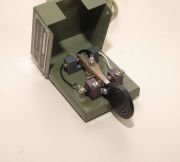 |
| Another Russian Keyer | Inside the Russian Keyer | Bosnian Keyer Paddle Made in Travnik, Bosnia | Close-Up of the Bosnian Paddle With the Cover Open |
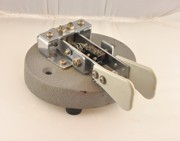 |
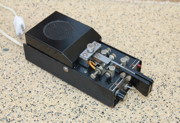 |
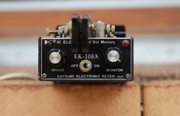 |
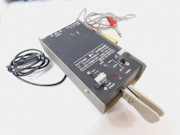 |
| Japanese-made Katsumi Microswitch Paddle, Model KM-22. Ca. 1970's | Katsumi EK-108a Electronic Keyer. Ca. 1970's | Front View of the Katsumi EK-108a | Katsumi EK-121 Keyer |
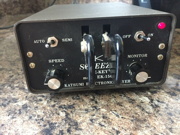 |
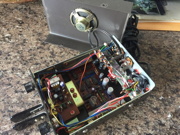 |
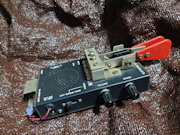 |
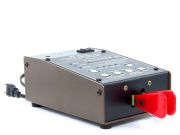 |
| Katsumi EK-150 Electronic Keyer | Inside the Katsumi EK-150 | Katsumi EK-155 Electronic Keyer | Katsumi EK-600 Electronic Keyer |
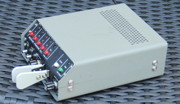 |
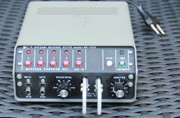 |
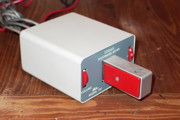 |
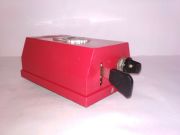 |
| Katsumi EK-1024 Memory Keyer. Ca. Mid-1970's. | Front View of the Katsumi EK-1024 | Waters Model 361 Codax Keyer | Russian TU-12MO Keyer. Ca. 1974-1980 |
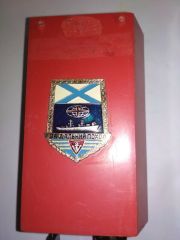 |
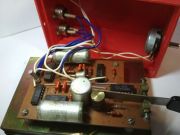 |
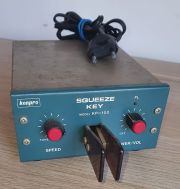 |
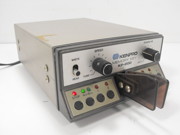 |
| Close-up of the Emblem on Top of the Keyer | Circuitry Inside the Russian Keyer | Kenpro Model KP-100 Squeeze Key | Kenpro KP-200 Memory Keyer |
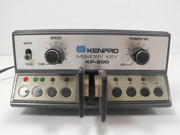 |
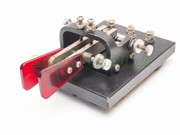 |
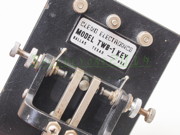 |
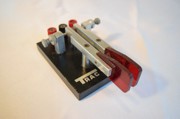 |
| Front View of the Kenpro Memory Keyer | Cleng Electronics Model TWB-1 Paddle. Dallas, Texas | Close-up of the Cleng Paddle Nameplate | Trac-Key Paddle by Trac Electronics, Buffalo, NY. Ca. Late 1970's |
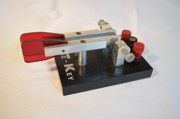 |
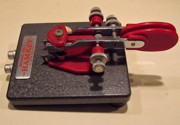 |
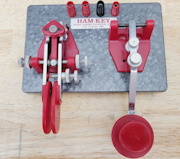 |
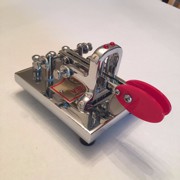 |
| Another View of the Trac-Key Paddle | Ham Key HK-1 Paddle. Made by Ham Radio Center, St. Louis. Late 1970's (WJ1B Collection) | Ham Key HK-4 Paddle and Straight Key Combo. St. Louis. Late 1970's | Vibroplex Vibrokeyer Iambic Paddle. 1979-Present. (This key Was Made in Knoxville, Tenn by the New Vibroplex Owners) |
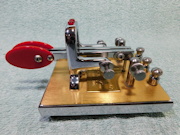 |
 |
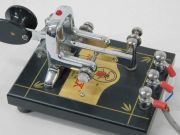 |
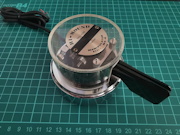 |
| The Vibroplex Iambic Presentation Model with the Gold Plated Brass Plate on Top Like the Vibroplex Presentation Model Bug | A Vibrokeyer Non Iambic Paddle With Japanned Finish. Made in Knoxville, Tenn. | Another View of the Japanned Finish Vibrokeyer Paddle | Hi-Mound MK-8 Iambic Paddle. Ca. Late 1970's |
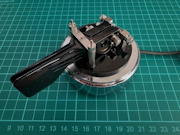 |
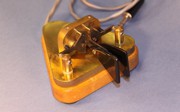 |
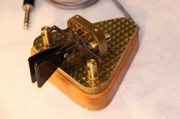 |
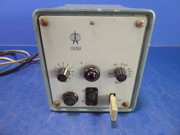 |
| The Hi-Mound MK-8 With the Cover Removed | Hamco "Scotia" Magnetic Paddle, Eureka, Cal. Hamco Purchased the Telegraph Key Business from HAL in 1978 | Hamco "Trinidad" Magnetic Paddle. Similar to the "Scotia" but With Hammertone Finish | Lorenz EMT-567 Keyer. Leipzig, East Germany |
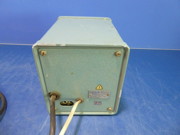 |
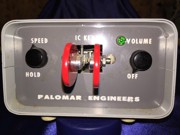 |
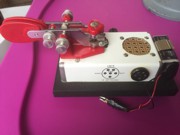 |
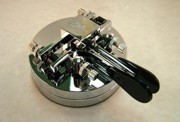 |
| Back of the Lorenz Keyer | IC Keyer by Palomar Engineers, Bonsall, Cal. Ca. 1970's | Later Version of the IC Keyer by Palomar Engineers. Ca. 1980 | N2DAN "Mercury" Magnetic Paddle. Ca. 1980's & 90's |
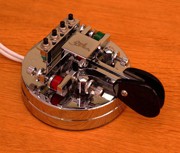 |
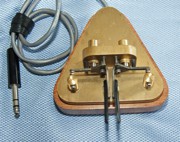 |
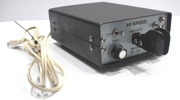 |
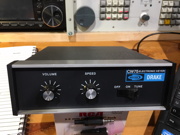 |
| N2DAN "Mercury" Paddle With Memory Keyer Attachment | Vibroplex Brass Racer. Vibroplex Bought the Rights to This Key From Hamco in 1982. Still in Production (KD2UJ Collection) | Hi-Speed EK-100 Keyer | Drake CW-75 Keyer. Ca. 1982 |
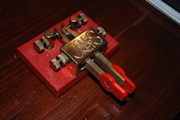 |
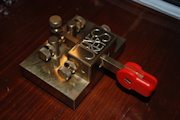 |
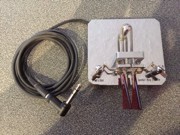 |
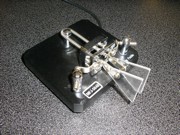 |
| Jones Key Iambic Paddle. Ca. 1980's & 90's | Jones Key Non Iambic Paddle. Ca. 1980's & 90's | MFJ-564 Paddle. MFJ Enterprises, Starkville, Mississippi. 1980's-Present | MFJ-564B. Black Based Version of the 564 |
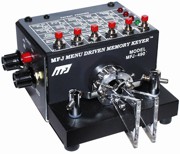 |
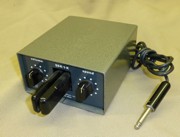 |
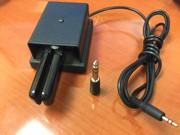 |
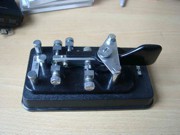 |
| MFJ Memory Keyer. 1980's-Present | Nye Viking SSK-1 Keyer & Paddle. William Nye, Bellevue, Washington. 1980's & 90's | Nye Viking Stand-Alone Keyer Paddle | Hi-Mound MK-701 Paddle. Ca. 1980's-Present |
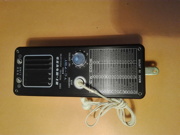 |
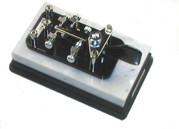 |
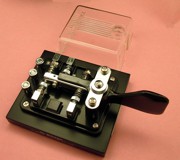 |
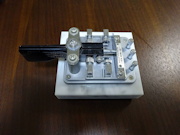 |
| Hi-Mound TC-701 Code Practice Oscillator | Hi-Mound MK-702 Paddle. Ca. 1980's-Present | Hi-Mound MK-704 Paddle With Cover. Ca. 1980's-Present (morsex.com) | Hi-Mound MK-705 Paddle |
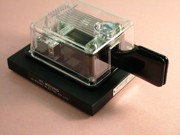 |
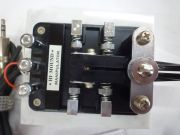 |
 |
 |
| Hi-Mound MK-706 Paddle With Cover. Ca. 1980's-Present (morsex.com) | The Hi-Mound MK-706 With the Cover Removed | The Compound Key From Hi-Mound. Uses 3 HK-802 Straight Keys, With 2 of Them Placed Back-to-Back to Make the Keyer Paddle | Another View of the Hi-Mound Compound Key |
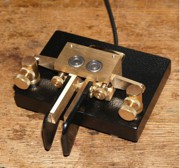 |
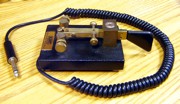 |
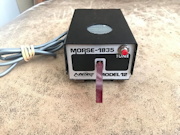 |
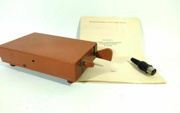 |
| Kent Iambic Keyer Paddle. RA Kent, Preston, England. 1990's-Present | Kent Single Lever Non-Iambic Paddle | Matric Model 12 Non Iambic Keyer | Russian Electronic Keyer. Ca. 1980s |
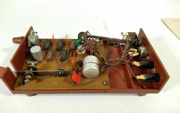 |
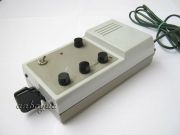 |
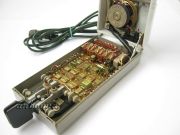 |
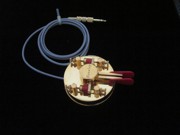 |
| Inside the Russian Keyer | Russian EKM-4 Keyer. Ca. 1990 | Inside the EKM-4 Keyer | Hensley Magnetic Paddle by Donald Hensley, AC4HB. 1990's-2002 |
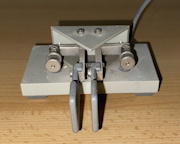 |
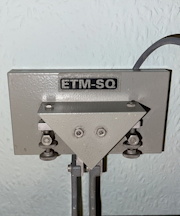 |
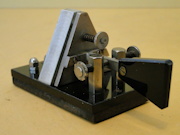 |
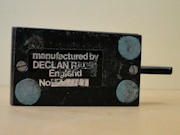 |
| German Paddle Labeled "ETM-SQ". Made by Samson | Close-Up of the ETM Label | Keyer Paddle by Declan Radio, England | Close-Up of the Declan Radio Nameplate |
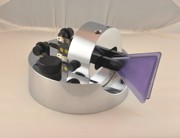 |
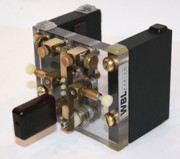 |
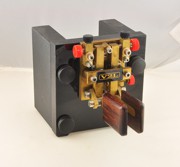 |
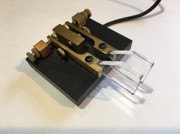 |
| Russian Paddle With Built-In Keyer. Electroinstruments Model ARE-90. Voronezh Russia, Ca. 1993 | Single Lever Vertical Paddle by W9WBL. 1990's | Iambic W9WBL Vertical Paddle, Model V2L. 1990's | Vibroplex Code Warrior Jr. Designed by K8FF. 1990's-Present |
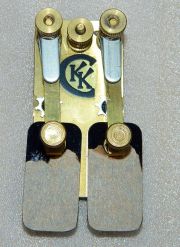 |
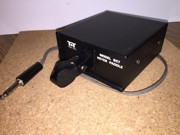 |
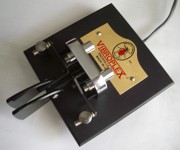 |
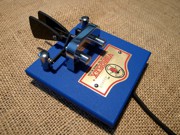 |
| The Kitano Key. Made by Kit Raymond, Kitano Key Co, Princeton NJ. Ca. 1996 | Ten-Tec Keyer Model 607. Ten-Tec Corp, Sevierville, Tenn. Ca. 2000 | Vibroplex Square Racer Iambic Paddle. Currently in Production | Vibroplex Square Racer With Blue Finish |
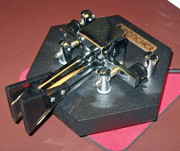 |
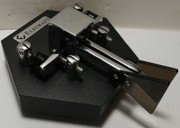 |
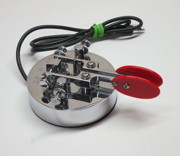 |
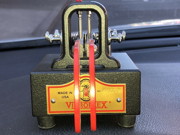 |
| Bencher Hex Base Magnetic Paddle. Currently in Production (WJ1B Collection) | Hex Base Magnetic Paddle by Elecraft | Vibroplex Venus Magnetic Paddle | Vibroplex Vibrocube Paddle |
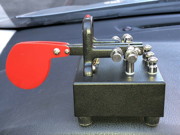 |
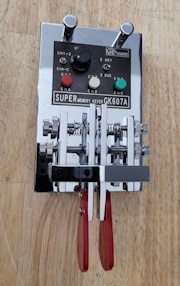 |
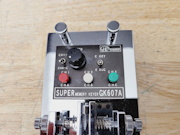 |
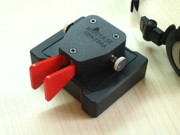 |
| Side View of the Vibrocube | GHD GK-607A Paddle With Built-In Keyer. Currently in Production | Close-Up of the Keyer Controls on the GK-607A | Chinese Keyer Paddle by UniHam Model Uni-730A |
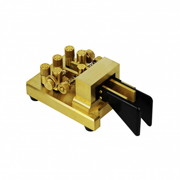 |
|||
| Another Chinese Paddle, Model S-59. Maker Unknown | |||
| MODERN HAND CRAFTED PADDLES | |||
Begali Paddles Made in Italy by Pietro Begali, I2RTF. Keys can be purchased at the Begali Website http://www.i2rtf.com/ |
|||
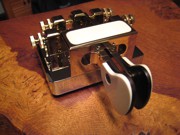 |
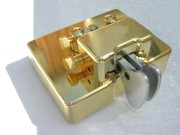 |
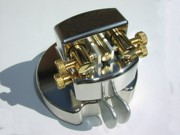 |
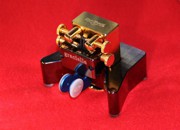 |
| Chevron Ebony-Ivory | Contour | Graciella Jr. | Graciella |
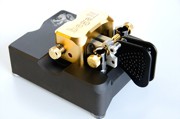 |
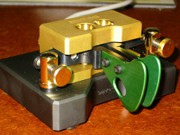 |
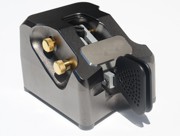 |
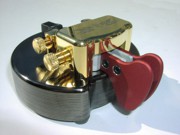 |
| Leonessa | Magnetic Classic | Magnum | Pearl Iambic (WJ1B Collection) |
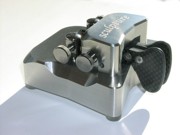 |
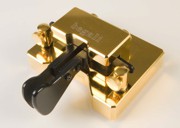 |
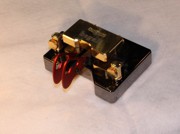 |
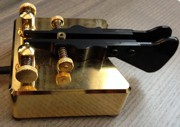 |
| Sculpture | Signature Gold | Signature | Simplex Gold (WJ1B Collection) |
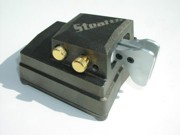 |
 |
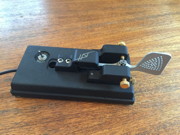 |
|
| Stealth | Stradivarius | HST Mark II Iambic Paddle | |
Schurr Keys Originally made by Gerhard Schurr, DH2SAA. Unfortunately Gerhard passed away in 2011. Now there are 2 different people making paddles based on the Schurr design. *Stefan Bergsiek makes the Profi-M paddle, successor to the Schurr Profi-2. These paddles are availabe in different designs. Visit his website at: http://www.bergsiek-morsetasten.de/index-e.htm *Uli Scheunemann makes Schurr style paddles through his company Scheunemann Morsetasten. His paddles can be purchased through Morse Express: http://www.morsex.com/scheun/ |
|||
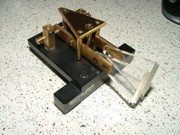 |
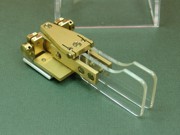 |
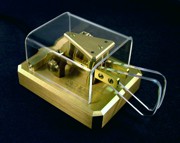 |
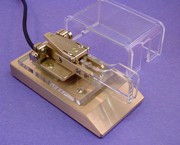 |
| One of the Earliest Schurr Paddles From the 1980's | Schurr Einbau. Sold Without Base | An Original Schurr Profi-2 by Gerhard Schurr | Schurr Portable Wabbler |
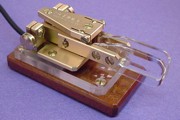 |
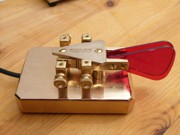 |
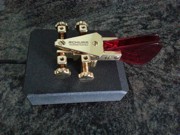 |
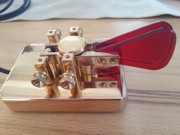 |
| Schurr Mini-Portable Wabbler | Schurr Profi-M by Stefan Bergsiek | Schurr Profi-M on Stone Base | Another Version of the Profi-M |
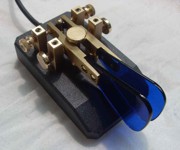 |
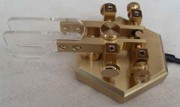 |
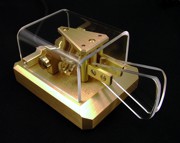 |
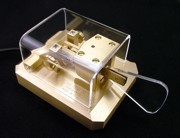 |
| Still Another Version of the Profi-M by Stefan Bergsiek | Schurr Profi-M Hex Paddle | Scheunemann Morsetasten Paddle. Morse Dirigent Model | Scheunemann Morsetasten Einhebel 3 Model |
Frattini Keys Made by Alberto Frattini, I1QOD in Italy. Alberto also makes bugs. To purchase these keys, visit Alberto's website: http://www.i1qod.it/ |
|||
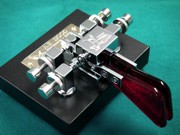 |
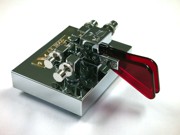 |
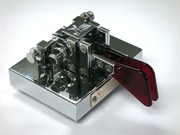 |
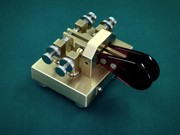 |
| Frattini Magnetic Black Iambic | Frattini Magnetic Chrome Iambic | Frattini Lamellare | Frattini Deluxe Model |
March Magnetic Paddles Very unique paddle designs by Mike March, K4QU. Visit Mike's website to purchase these keys: https://sites.google.com/site/marchmagneticpaddles/ |
|||
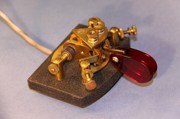 |
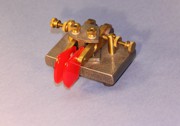 |
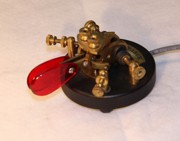 |
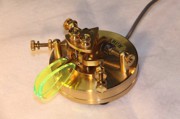 |
| An Early Model March Paddle | March Miniature Paddle | March R-3a Round Base Paddle | All Brass Version of the R-3a |
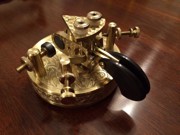 |
 |
||
| An Ornately Engraved Version of the Round Base Paddle | The March Vertical Paddle | ||
GHD Keys Made in Sendai, Japan by Toshihiko Ujiie (JA7GHD). He makes paddles and bugs. Some of his bugs and paddles use optical sensors for the "contacts", making them very smooth to operate. Keys can be purchased from Morse Express: http://www.morseexpress.com/ghd/ |
|||
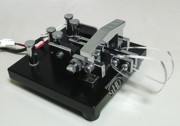 |
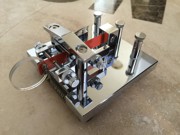 |
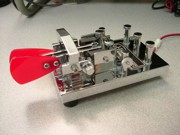 |
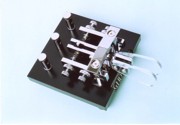 |
| GHD 517b With Optical Sensor Contacts | GHD Single Lever Sideswiper Style Paddle | GHD 817a With Optical Sensor Contacts | GHD 507b with Standard Mechanical Contacts |
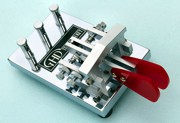 |
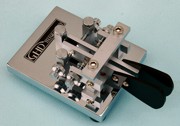 |
||
| GHD 607b Paddle With Mechanical Contacts | GHD 807a Paddle With Mechanical Contacts | ||
G4ZPY Keys Gordon, G4ZPY, specializes in making miniature paddles. Perfect for QRP and portable enthusiasts. Visit his website at: http://www.g4zpy.go-plus.net/g4zpy_index.htm |
|||
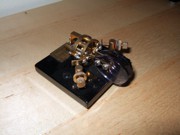 |
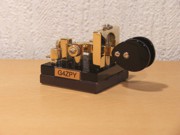 |
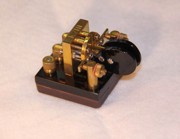 |
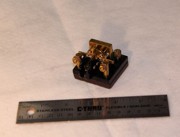 |
| G4ZPY Twin Paddle Iambic | G4ZPY Mini Single Lever Key | A Different Version of the Twin Iambic Paddle | A Ruler Shows Just How Small These Paddles Are ! |
CT Keys CT Keys are made by UR5CDX in Ukraine. His keys can be purchased on Ebay or from his website: http://www.ur5cdx.com/index.php?language=en |
|||
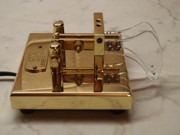 |
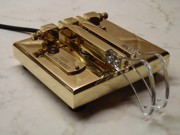 |
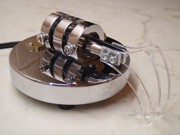 |
|
| CT 73 Model | CT 599 Model | CT Europe Model | |
K4VIZ Keys Tom, K4VIZ, specializes in right-angle and vertical paddles and bugs. Visit his website at: http://vizkey.com/ |
|||
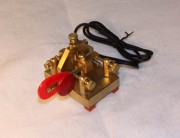 |
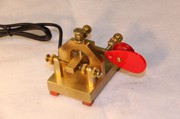 |
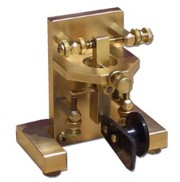 |
|
| The K4VIZ Right Angle Paddle | Another View of the Right Angle Paddle | K4VIZ Vertical Paddle | |
N3ZN Paddles Tony, N3ZN, makes some very interesting paddles. Check out his website at: http://www.n3znkeys.com/ |
|||
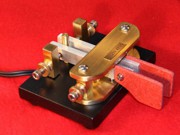 |
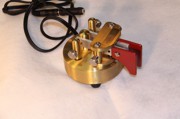 |
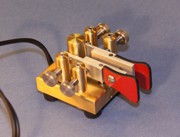 |
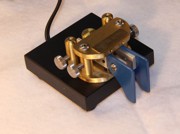 |
| ZN-1 | ZN-2 | ZN-QRP | ZN-4a |
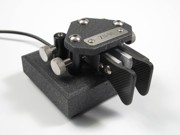 |
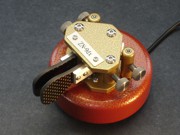 |
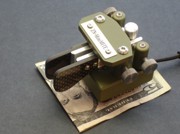 |
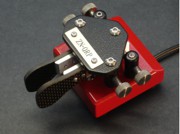 |
| ZN-9a | ZN-9dx | ZN-Minimite | ZN-QRP (Later Version) |
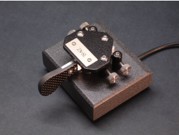 |
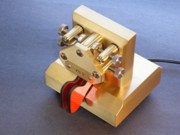 |
||
| ZN-SL (Single Lever Paddle) | ZN-V (Vertical Paddle) | ||
Questions or comments?
You can reach me at telegraphdude@comcast.net
